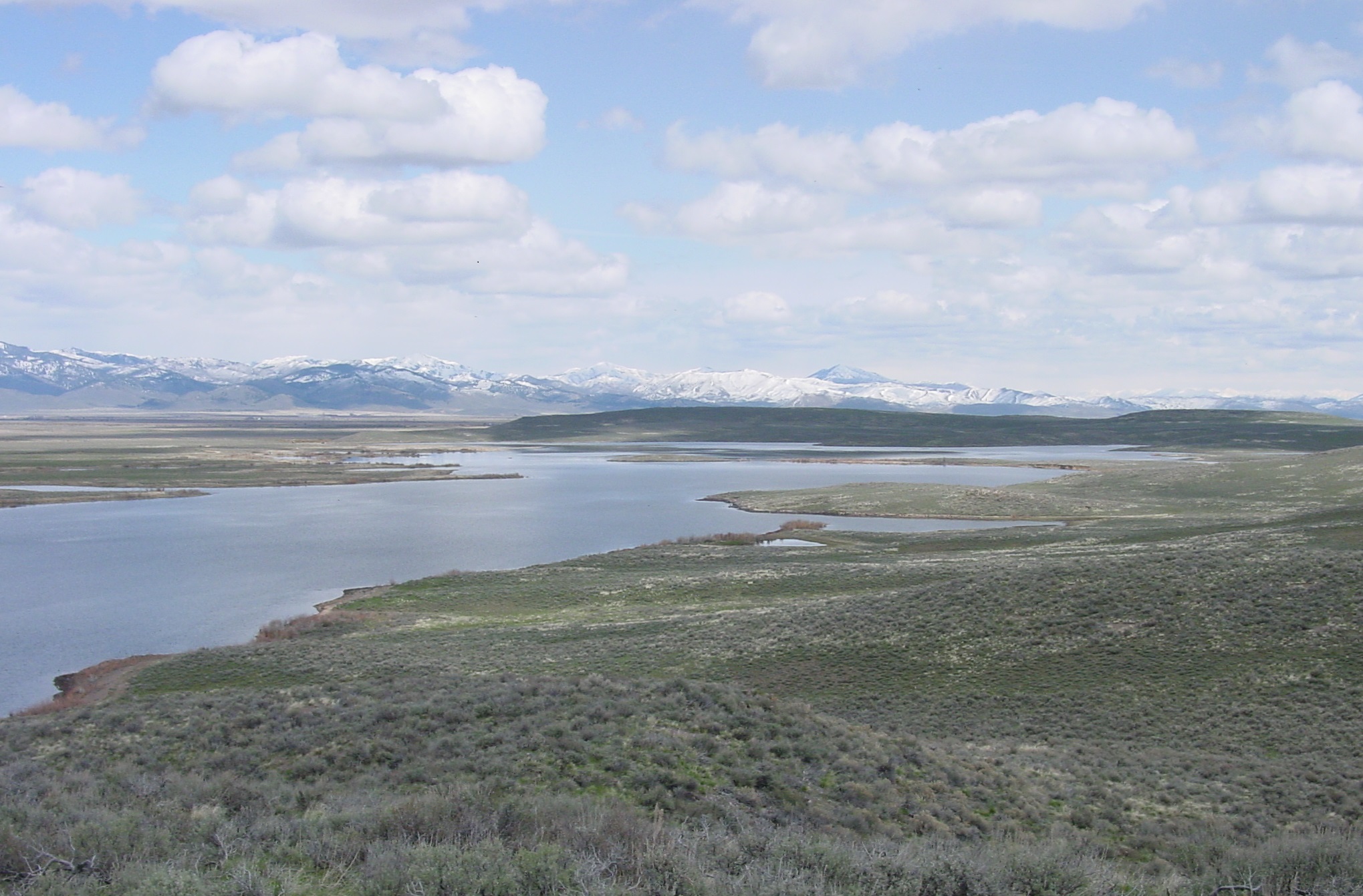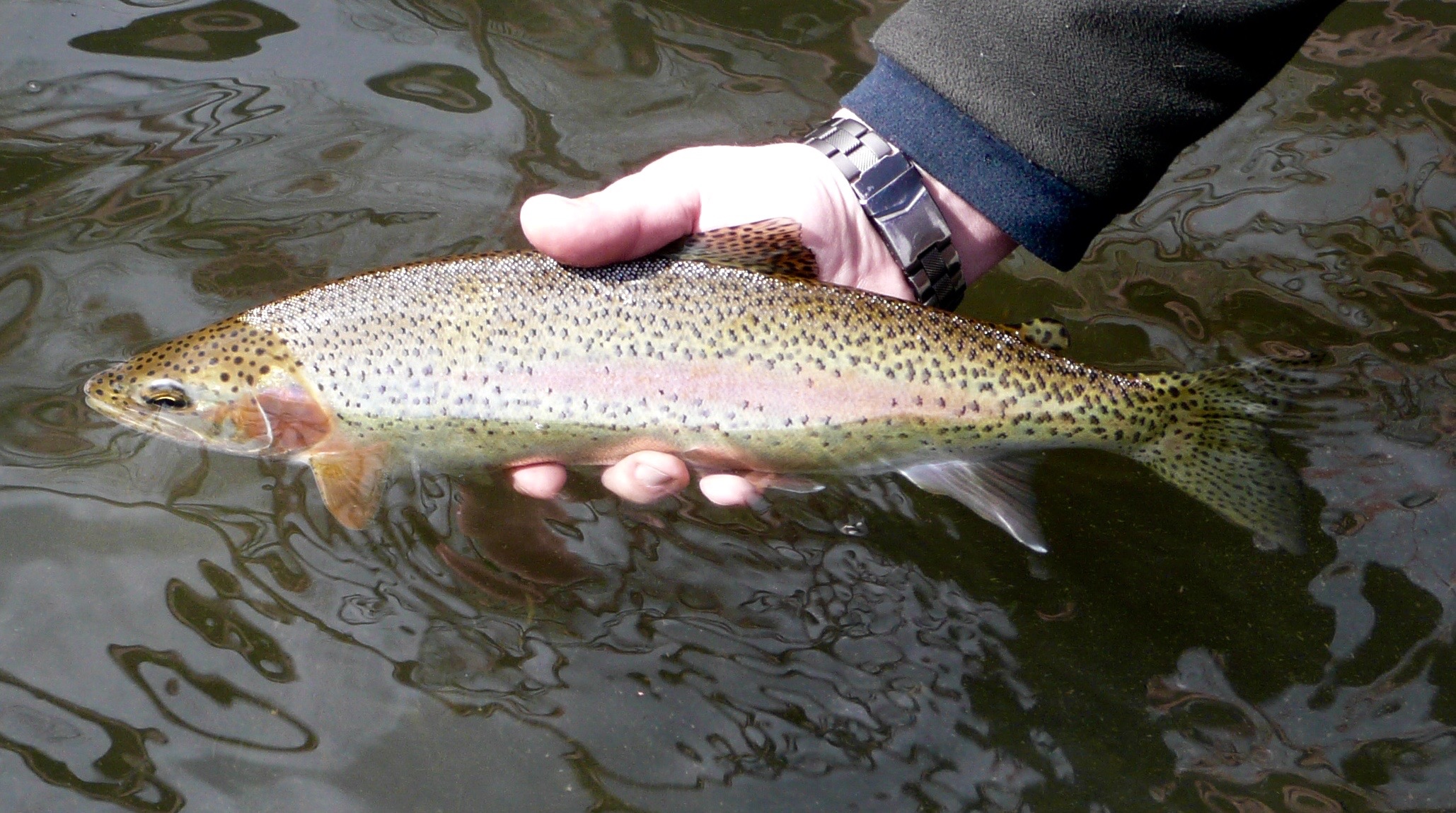Mormon Reservoir near Fairfield recently returned as a destination fishery that produces big trout and lots of them. While older anglers might remember (with a tinge of nostalgia) a time when this was the norm, it hasn’t been the case until a few years back when a series of events helped revive Mormon’s trout fishing.

So what changed at Mormon Reservoir that allowed it to once again produce 20-inch trout, and lots of them? There were several factors that contributed to its resurgence.
“First, management efforts have been made to reduce the aquatic vegetation that has caused annual winterkills,” said Doug Megargle, Magic Valley Region’s fisheries manager. “Second, planned and opportunistic trout stocking over the past four years have resulted in major increases in trout densities in the reservoir.”
Anglers had a particularly impressive year fishing Mormon Reservoir in 2018. Megargle said some anglers reported 60 to 80 fish days, with “a good chunk” of those measuring over 20 inches.
Big fish stocking boost a boon for anglers
Megargle explained that what’s most responsible for last year’s outstanding fishing was a massive stocking of 35,000 catchable-sized trout in the reservoir in the fall of 2015.
“For perspective, consider that we stocked 38,000 combined from 2007 through 2012 at Mormon Reservoir, compared to the 35,000 stocked in one year,” Megargle said. “That unusually high number was the result of fish being diverted from drought-impacted reservoirs without sufficient water, combined with the planned stocking at Mormon.”

Recovering from events that lead to a decline in fishing
Until recently, Mormon Reservoir had not been ideal trout habitat for a decade or more. The fishery was decimated by multiple drought years that resulted in low water levels.
“The greatest challenges at Mormon Reservoir have been low water storage and lethal biological oxygen demand that prevented fish from surviving over winter, which is what produces those 20-inch trout,” Megargle said.
Thanks to a large number of irrigation reservoirs in the Magic Valley, Fish and Game has the privilege of developing and managing fisheries in waters that would otherwise not have any, but some factors that contribute to good fishing are beyond the agency’s control.
“The challenge for fishery management is working with the sizeable annual fluctuations in reservoir water storage related to seasonal precipitation and irrigation demand,” Megargle said. “Fish habitat quality and quantity are often directly related to water storage levels that change on a year-to-year basis, making it difficult to provide a stable fishery.”
The low water levels during drought years at Mormon Reservoir also caused an outbreak of smartweed, which made fishing difficult for anglers, and also contributed to trout winterkill after the smartweed died in the fall.
Winterkill occurs when sunlight is blocked for extended periods, such as when a reservoir is covered by ice and snow. Low sunlight limits photosynthesis that produces oxygen, and low oxygen levels are exacerbated by bacteria that uses remaining oxygen to decompose dead vegetation, creating conditions that can be lethal for trout.
More smartweed meant more dead plants for bacteria to break down and less oxygen available for trout, which in some years caused almost complete fish die off in the reservoir. On top of all that, years ago, the bridges to Mormon Reservoir were deemed unsafe, which hampered angler access.
Fortunes have improved for anglers and the reservoir
In 2015, good survival rates in Fish and Game’s hatcheries resulted in extra trout available for stocking, and most were directed either to Mormon Reservoir or Salmon Falls Creek Reservoir. Trout originally destined for drought-stricken Little Camas Reservoir and Thorn Creek Reservoir were also redirected to Mormon.
More stocking also was done in Mormon that year in anticipation of public access being restored by the construction of two new bridges in 2016.
After a winterkill scare in the winter of 2016-17 when Fish and Game received reports of dead trout at the boat ramp, biologists feared their efforts had been negated, but they got a pleasant surprise when anglers reported fantastic trout fishing the following spring, and better fishing continued in 2018.
“That was an amazing year for trout fishing at Mormon Reservoir,” Megargle said.
To address smartweed, Fish and Game helped support Camas County’s efforts to use herbicide to control the outrbreak in the reservoir. An airplane treated about 750 acres in 2017, and around 500 acres in 2018. Anglers noticed an immediate improvement in boating and fishing access, and winter trout survival also improved.
Water levels in the Magic Valley Region’s reservoirs have also recently improved with ample winter snow and spring rain, which allows fisheries managers to resume stocking formerly drought-stricken lakes, reservoirs and ponds.
While beneficial for Mormon Reservoir, the huge 2015 stocking of catchable-sized trout was potentially a one-year deal. The chances of repeating 35,000 catchable trout available in a single year are slim because there’s a limited number of hatchery trout that must be shared among many lakes, reservoirs, ponds and streams in the region.
The future is uncertain
Many anglers are probably wondering if Mormon Reservoir will produce the same amount of gigantic trout in 2019 as it did in 2017 and 2018. Probably not given that the huge numbers of catchable-sized trout stocked in 2015 haven’t been repeated, and that’s what drove the eye-popping catch rates last year.
Will stocked trout continue to successfully over-winter in Mormon Reservoir, allowing them to grow to the large sizes it was once famous for, albeit with fewer fish than in 2017 and 2018? That remains to be seen — even for this year.
The winter snowpack was well above average, which should keep water levels higher for longer periods and prevent another smartweed explosion. But that same snowpack may have resulted in low oxygen conditions under the ice, so some winterkill is still a possibility. More will be known when all the ice thaws, which typically occurs in late April or early May, and anglers get out on the reservoir.
“Mormon isn’t out of the woods yet,” Megargle said. “Trout survival through winter months isn’t a given, but they have a much better chance thanks to county and state collaboration in vegetation control.”
Many things have changed at Mormon due to efforts by Fish and Game staff and other agencies to improve fishing, water quality and access. Anglers should enjoy the good fishing and the opportunity to catch trophy-sized trout, but realize it’s unlikely to last indefinitely.
“We’re in a way better place than we were 10 years ago, but there are still many challenges to providing a consistent fishery,” Megargle said.

